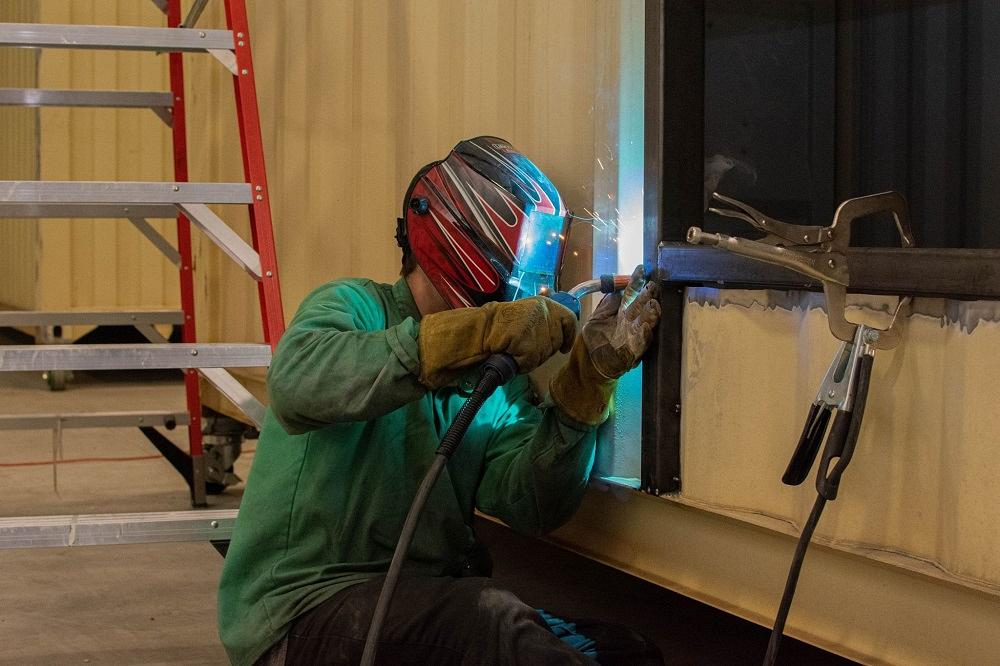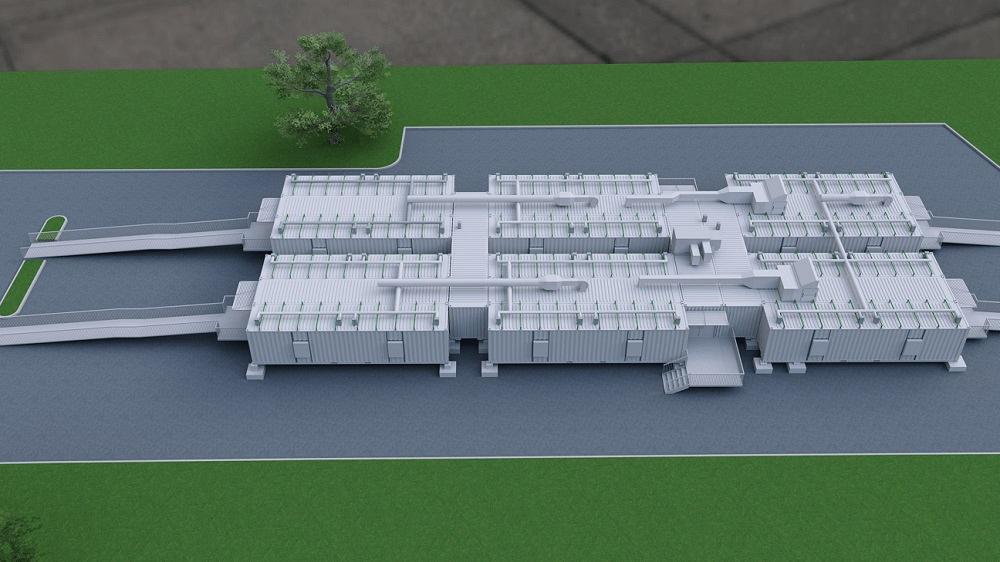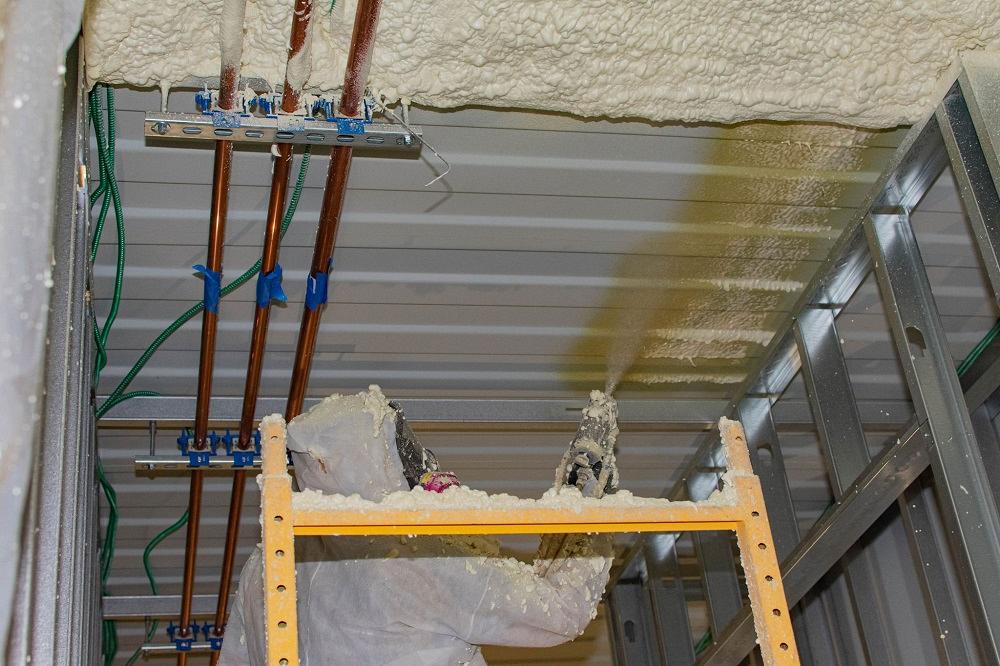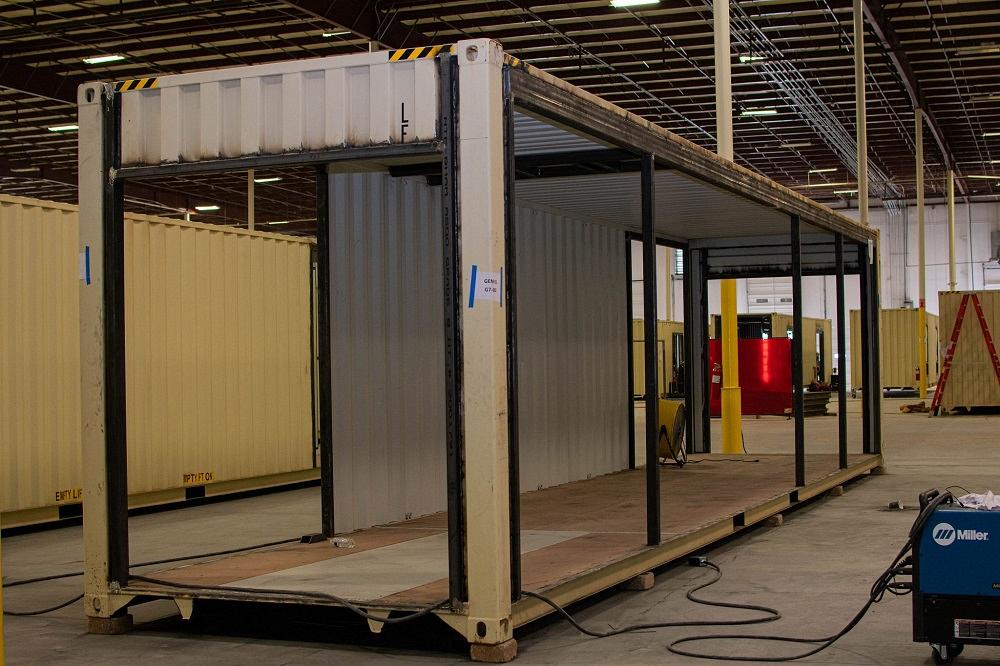Editor-in-Chief
- FMA
- The Fabricator
- FABTECH
- Canadian Metalworking
Categories
- Additive Manufacturing
- Aluminum Welding
- Arc Welding
- Assembly and Joining
- Automation and Robotics
- Bending and Forming
- Consumables
- Cutting and Weld Prep
- Electric Vehicles
- En Español
- Finishing
- Hydroforming
- Laser Cutting
- Laser Welding
- Machining
- Manufacturing Software
- Materials Handling
- Metals/Materials
- Oxyfuel Cutting
- Plasma Cutting
- Power Tools
- Punching and Other Holemaking
- Roll Forming
- Safety
- Sawing
- Shearing
- Shop Management
- Testing and Measuring
- Tube and Pipe Fabrication
- Tube and Pipe Production
- Waterjet Cutting
Industry Directory
Webcasts
Podcasts
FAB 40
Advertise
Subscribe
Account Login
Search
Building a hospital in four weeks during pandemic
Fabricators, trade school, laid-off welders join forces to construct temporary Georgia hospital for COVID-19 patients
- By Dan Davis
- May 4, 2020

Welders played a large role in transforming the shipping containers into patient and auxiliary rooms for the temporary Georgia hospital structures. Images courtesy of BMarko Structures.
If you remember back to late January, you might recall a news report from Wuhan, China, about an emergency hospital being constructed in just 10 days to accommodate the surge of patients who had contracted the coronavirus. It sounded like an accomplishment that could occur only in a totalitarian state where the government can throw people and resources at a project without any public discussion or commentary.
Would you believe something similar happened in the middle of the U.S. COVID-19 crisis? It’s a pretty amazing tale as well.
Effeciency of Off-site Construction
At the heart of these quick turnaround projects are modular construction units. In this type of construction, sections of a building are constructed away from the work site and often in a controlled plant environment. These modular units, designed and constructed to the same codes and standards as conventionally built structures, are delivered to a work site and assembled together. This form of building, while currently representing a small percentage of the overall construction industry, is gaining popularity because of its ability to be completed much more quickly than typical on-site construction.
Antony Kountouris, CEO, BMarko Structures, started his company almost six years ago because he believed this type of construction would eventually dominate the industry. To put it simply, you don’t have to battle Mother Nature when you are doing the construction indoors.
“With modular construction, you're able to do work in conjunction with your peers and your coatings while you're building the box for delivery to the site,” he said. “It’s the way that everything should be built, with the exception of those things that can’t be built with modular construction, such as a hotel with a super-tall ceiling.”
Although BMarko Structures has divisions dedicated to metal and wood modular construction, Kountouris started his company working with shipping containers because they were plentiful, affordable, and useful. With 14-ga. walls that are 2 mm thick, the containers provided a solid option for a company looking for quick construction that could deliver on functionality. Over the years the container method of construction proved itself worthwhile as BMarko Structures delivered units used for tasks such as selling tickets and serving up concessions. It was no surprise then when Kountouris recognized that the shipping containers might be a good way to deliver much-needed medical space to communities seeing their hospitals overrun with COVID-19 cases.
He started getting calls from federal officials asking him about the possibility of quick construction of a hospital. Kountouris reached out to a colleague who was a lead building designer for a major hotel brand, and he connected the two. In a matter of days, he had designs for hospital setups comprising shipping containers.
“The containers are ready-made. You have to build them up, but you don’t have to start from the ground up like you would with a steel or wood module,” Kountouris said.
The Georgia Emergency Management and Homeland Security Agency (GEMA) was the first to reach out to BMarko Structures about the hospital design. Emergency officials had one coronavirus hot spot in Albany, Ga., at the time, where it was dealing with an outbreak that was overwhelming the local hospital and its 14 intensive care beds.
When asked how fast he could build the containerized hospital, Kountouris said he replied eight weeks. GEMA told him they needed two hospitals fabricated in four weeks.

This is a computer rendering of what a hospital structure made of shipping containers looks like. BMarko Structures, Dacula, Ga., fabricated two of these structures for hospitals in Georgia that had been hit hard with patients who had contracted the coronavirus.
Creating Jobs While Helping Fight Pandemic
Meanwhile, BMarko Structures’ existing business had not slowed down, so these hospital structures needed to be built in a new facility with new workers.
The task may have seemed daunting, but what Kountouris found is that people were more than willing to help for the greater good. They found an empty warehouse space in a couple of days and closed the deal for a short-term rental. They brought in a generator and three members of the BMarko Structures team to oversee the construction effort. They ended up hiring 22 welders, 11 per shift, by leaning on their relationship with the Acworth, Ga.-based Georgia Trade School, which called upon its graduates, many of whom had been laid off during the lockdown. The company also found local welders who normally worked in Atlanta’s film industry, which also had shut down in recent weeks.
Kountouris said he and his team got a baptism by fire in hospital building specifications. For example, do you know what a head wall is? It’s an architectural feature that combines electrical cords and medical gas tubing behind a wall. The head wall reduces clutter in the office and eliminates a lot of surface area where dust can collect.
With its newfound knowledge and hastily recruited workforce, BMarko Structures set forth working 17-hour days over the ensuing weeks. By the time the Liberty Pods, inspired by Liberty ships, the mass-produced cargo ships that kept supply lines open during World War II, were completed and shipped out in mid-April, more than 80 contractors had joined the construction effort. They were involved in everything from running electricity to finishing the flooring and painting the pods.
So what was produced over the four weeks of construction activity? Each hospital comprises 21 containers, which has 24 patient rooms and auxiliary rooms dedicated to oxygen management; electrical distribution; data management; air exchange; and vacuum functions, which are necessary for each of the 24 head walls that are a part of the patient rooms.
“This is a real hospital that was built to code. Of course, everything was expedited. GEMA was crucial in getting that to happen,” he said.
“It’s unbelievable. It really blows your mind because it should take longer,” Kountouris continued. “For example, the doors typically take four weeks for delivery. Maybe you’re waiting on your head walls for six weeks. Well, we did the whole damn thing in four weeks. That shows you the power of humanity.”
The 4-week Turnaround
As of the end of April, the pods that had been shipped to Phoebe Putney Memorial Hospital in Albany, Ga., were close to being assembled to complete the new hospital structure. The keys for the other hospital in Macon, Ga., another coronavirus hot spot, were to be delivered in early May.
In the meantime, BMarko Structures was still waiting to hear back from other potential parties that may have interest in the structures. The company had its rented warehouse space for another three months.
Kountouris said that even if they don’t ship any other hospital structures, the experience has been a good one because it has opened their eyes to what might be possible in the health care sector. Instead of containers, however, BMarko Structures likely would build metal prefabricated units, providing clients with a little more room than was available in the shipping containers.

Even though the structure was made of shipping containers, the hospital had to be constructed according to code. That meant steps such as applying insulation couldn’t be ignored.
“The containers made sense for the COVID-19 response,” said Kountouris, who added that they were immediately available for construction.
When you have to build a structure in a matter of weeks, immediacy is perfect timing.
subscribe now

The Fabricator is North America's leading magazine for the metal forming and fabricating industry. The magazine delivers the news, technical articles, and case histories that enable fabricators to do their jobs more efficiently. The Fabricator has served the industry since 1970.
start your free subscriptionAbout the Author

Dan Davis
2135 Point Blvd.
Elgin, IL 60123
815-227-8281
Dan Davis is editor-in-chief of The Fabricator, the industry's most widely circulated metal fabricating magazine, and its sister publications, The Tube & Pipe Journal and The Welder. He has been with the publications since April 2002.
- Stay connected from anywhere

Easily access valuable industry resources now with full access to the digital edition of The Fabricator.

Easily access valuable industry resources now with full access to the digital edition of The Welder.

Easily access valuable industry resources now with full access to the digital edition of The Tube and Pipe Journal.
- Podcasting
- Podcast:
- The Fabricator Podcast
- Published:
- 04/16/2024
- Running Time:
- 63:29
In this episode of The Fabricator Podcast, Caleb Chamberlain, co-founder and CEO of OSH Cut, discusses his company’s...
- Industry Events
16th Annual Safety Conference
- April 30 - May 1, 2024
- Elgin,
Pipe and Tube Conference
- May 21 - 22, 2024
- Omaha, NE
World-Class Roll Forming Workshop
- June 5 - 6, 2024
- Louisville, KY
Advanced Laser Application Workshop
- June 25 - 27, 2024
- Novi, MI
































